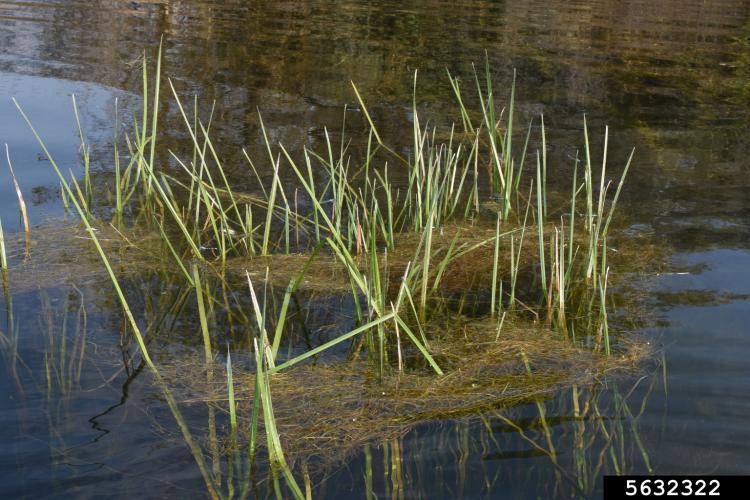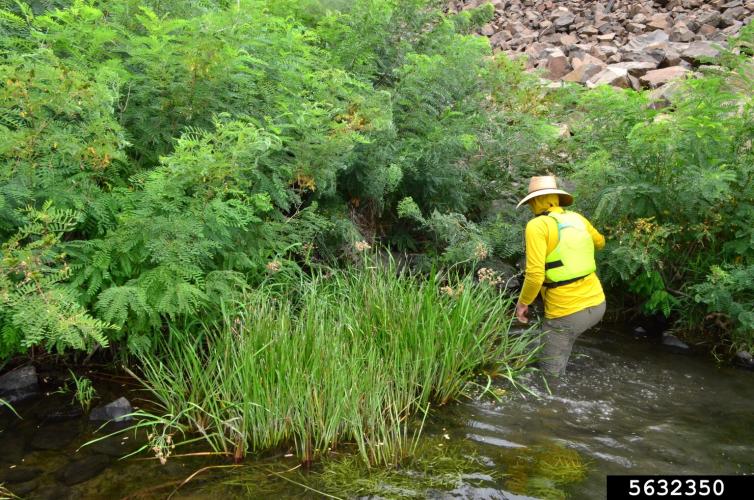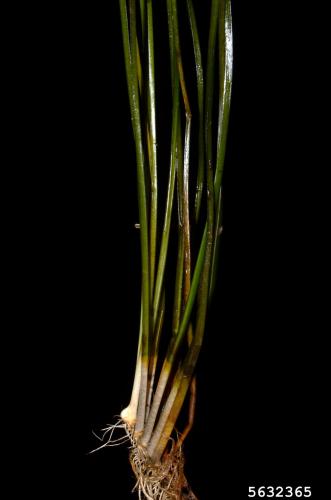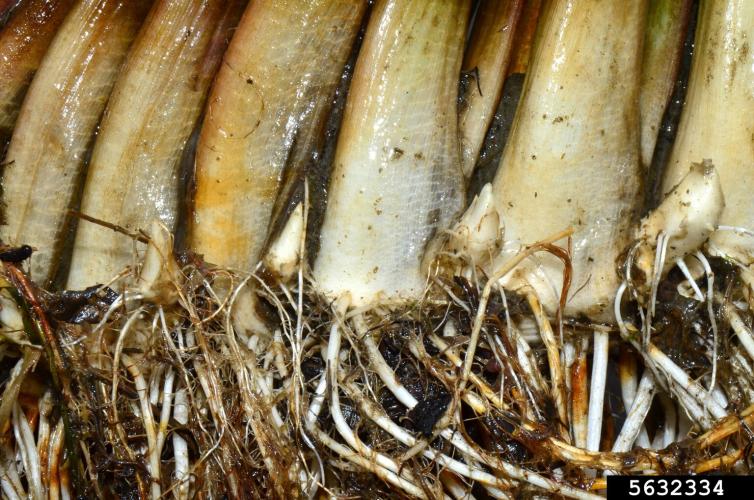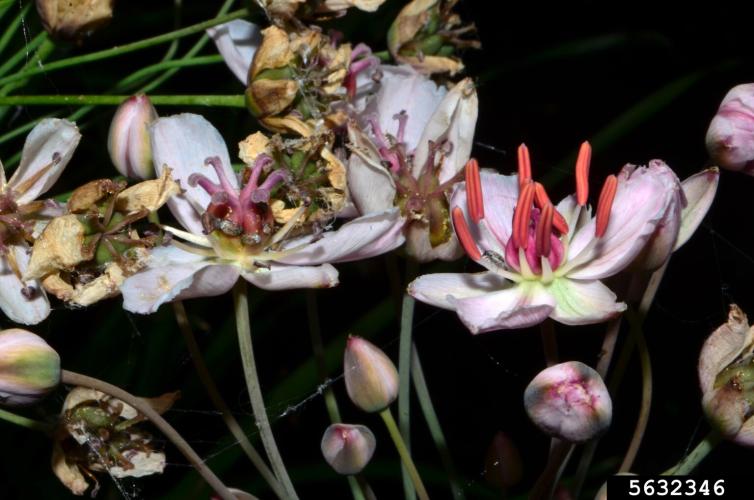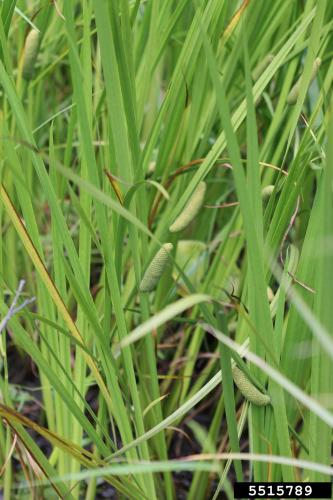Flowering Rush
Identification
Appearance
Flowering rush is a riparian and shallow-water plant that can be found in up to 6ft of water. The plant is composed of sedge-resemblant leaves and stalks that produce flowers. Flowering rush resembles a large sedge in overall form.
Foliage
The leaves and stalks of flowering rush are dark green in color and can grow up to 4.5ft tall. They have a triangular cross-section, and tend to twist as they grow, despite being relatively stiff when not submerged in water. When submerged however, the leaves and stalks become wilted and brown.
Flowers
Each flowering rush stalk can produce as many as 25 flowers. The flowers are pink, 3-petaled, and 1-1.5in in length. Central in the flower are 9 tall stamens, also pink in color, and 6 dark-pink pistils.
Biology
Habitat
Flowering rush grows along the shores of still water bodies, on stream banks, and in wetlands. It is most productive in shallow waters, <2m, and colonizes best during the low of fluctuating water levels.
Life Cycle
Flowering rush is a perennial plant. Its growing season is May-June, and it subsequently flowers from June-October, with seeds dropping during this period. There are several known flowering rush populations that are capable of sexual reproduction, but the majority of flowering rush are sterile, and spread through vegetative reproduction. Vegetative reproduction occurs through rhizome fragments detaching and beginning new bulb growth in shallow waters, as well as the movement of full bulbs through waterways.
Ecological Threat
Flowering rush is highly competitive when introduced into wetland habitat and is a strong vegetative reproducer. It can outcompete native vegetation and spread in density that is nuisance to recreational boat travel. Spread of flowering rush also impacts native trout species, who rely on open waters to spawn.
Vermont Distribution
Occurrences of flowering rush have been reported in both north-western and south-eastern Vermont, but there are no known large-scale infestations.
How You Can Help
For most aquatic invasive species, humans are the primary vector of transport from one waterbody to another. Many of these nuisance plants and animals can be unknowingly carried on fishing gear, boating equipment, or in very small amounts of water in a watercraft. The easiest and most effective means to ensure that you are not moving aquatic invasive species is to make sure that your vessel, as well as all your gear, is drained, clean, and dry.
CLEAN off any mud, plants, and animals from boat, trailer, motor and other equipment. Discard removed material in a trash receptacle or on high, dry ground where there is no danger of them washing into any water body.
DRAIN all water from boat, boat engine, and other equipment away from the water.
DRY anything that comes into contact with the water. Drying boat, trailer, and equipment in the sun for at least five days is recommended. If this is not possible, then rinse your boat, trailer parts, and other equipment with hot, high-pressure water.
Citations
Photo Credit
5632365, 5632346, 5632334, 5632350, 5632322: Gabriel Campbell, Bugwood.org
5515789: Rob Routledge, Sault College, Bugwood.org
Information Credit
Jacobs, Jim, et al. Ecology and Management of Flowering Rush. United States Department of Agriculture, Sept. 2011.
“Minnesota DNR - MN Department of Natural Resources.” Minnesota Department of Natural Resources, 23 June 2018, www.dnr.state.mn.us/invasives/terrestrialplants/herbaceous/floweringrush.html.
USGS. “Flowering Rush (Butomus Umbellatus) - Species Profile.” Usgs.gov, United States Geological Survey, 2019, nas.er.usgs.gov/queries/FactSheet.aspx?speciesID=1100.
